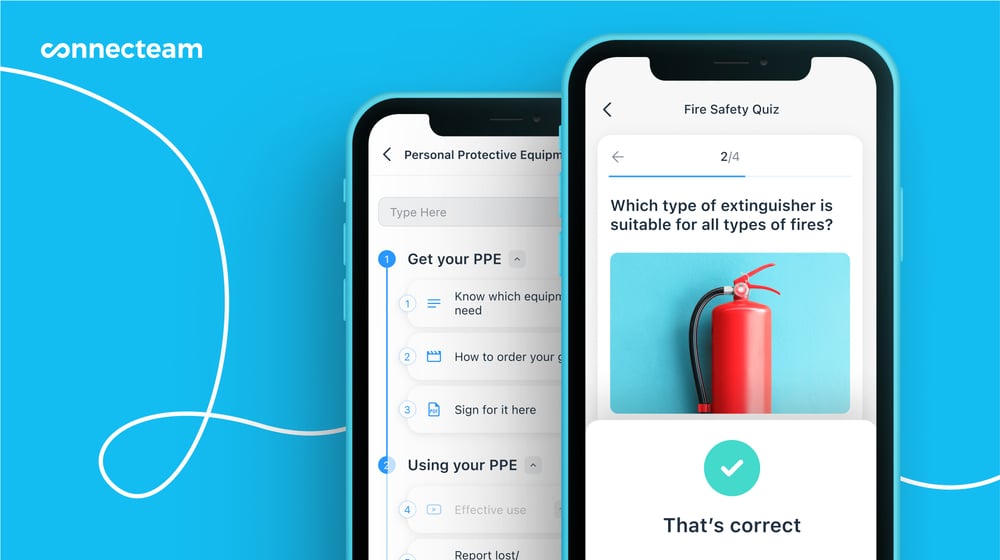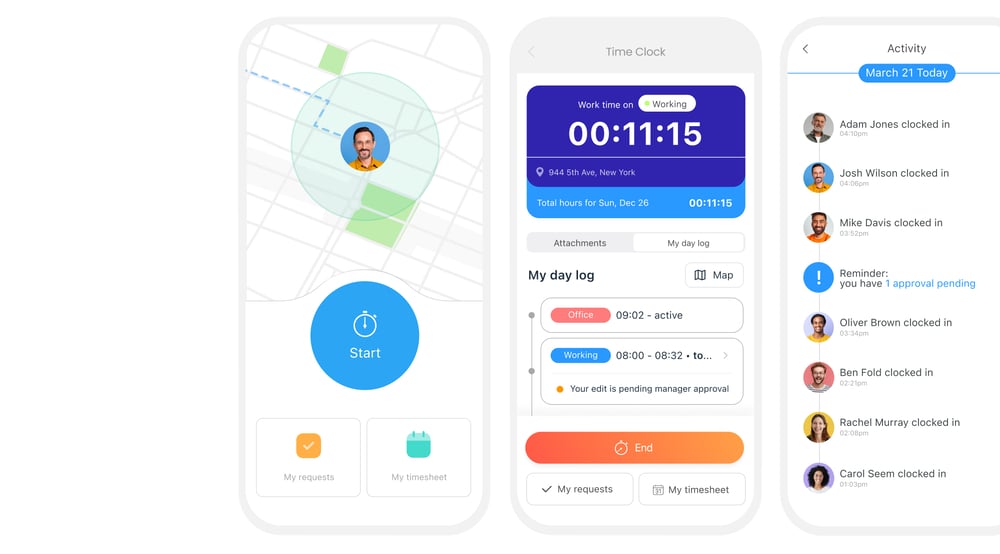Most employers face legal action at some point which can be stressful and cost significant time and money. In this article, learn some practical steps you can take to improve compliance in your organization and reduce the risk of common lawsuits.
Table of contents
Lawsuits are a business’s worst nightmare. Not only are they stressful for everyone involved, but they can also be costly for your organization. Cases often take years to move through the system and resolve, requiring a significant investment of time, money, and energy.
Although you can never bulletproof your business against a lawsuit, there are steps you can take to reduce the likelihood of them.
This article looks at 5 of the most common lawsuits against employers. We also provide some practical tips that may help reduce the risk of legal missteps—whether you’re just starting a business or have owned one for a while.
Key Takeaways
- Common lawsuits against employers involve workplace discrimination, work injury claims, wage theft, wrongful termination, or harassment.
- There are several steps you can take to try to reduce the risk of employment lawsuits. These include understanding your legal obligations, improving compliance, training your employees, and keeping detailed employee records.
- Using a digital platform like Connecteam is a great way to help you improve and maintain compliance at your business.
Common Workplace Lawsuits in the United States
Below, we discuss several types of lawsuits that US employers often face and suggest steps you can take to help reduce the risk of legal action.
This is intended as an overview for informational purposes. Like any legal issue, you must speak to an employment attorney to get advice relevant to your circumstances.
Discrimination
Employers in the US can’t discriminate against employees based on a protected class. Under federal law, these include race, color, national origin, religion, sex, age, disability, and genetic information. Some states also protect additional classes.
In discrimination lawsuits, the employee generally must show a link between the alleged discriminatory act and a protected characteristic. If they can do this, the employer must demonstrate that their actions were based on legitimate business reasons.
This is why it’s essential to maintain accurate employee records, especially those relating to employment decisions like denying an employee a promotion.
🧠 Did You Know?
Connecteam lets you securely store all employee records in one location. You and your employees can quickly access records at any time, from anywhere. You can also create custom access permissions to prevent unauthorized users from viewing sensitive information.
In addition, it’s vital to understand your legal obligations as an employer. Anti-discrimination laws change often, so you must stay on top of any developments. One way to do this is to monitor the Equal Employment Opportunity Commission (EEOC) website and your state’s equivalent for updates.
Similarly, training is also crucial. Provide your employees—especially managers and supervisors—with regular anti-discrimination training. This helps them to understand their rights and responsibilities.
📚 This Might Interest You:
Promoting diversity, equity, and inclusion (DEI) in the workplace is one way to help ensure compliance with anti-discrimination laws. Check out our articles on planning diversity workplace events and delivering effective DEI training to learn more about supporting workplace DEI.
Personal injury
Ill or injured workers typically file a workers’ compensation claim. In certain circumstances, they can also initiate a workplace injury lawsuit.
Workers’ compensation laws usually cover medical costs and lost wages. But in a personal injury claim, workers injured on the job may also be able to claim pain and suffering for their workplace injury and loss of future earnings.
🧠 Did You Know?
In 2021, employers reported 2.6 million nonfatal workplace injuries and illnesses.
Maintaining a safe working environment is the first step to reducing the risk of these types of lawsuits. Ensure you monitor your workplace for safety hazards, addressing any as soon as they arise.
Comprehensive employee training, including during onboarding, is also vital in reducing the risk of workplace accidents. Make sure you keep up-to-date training records for your employees, too. This helps you quickly identify workers who need to retrain or renew their safety certifications.

🧠 Did You Know?
Connecteam makes it easy to deliver training and onboarding to your employees and keep track of their training and certification records. Create automated onboarding workflows for new hires and custom training courses for all employees in minutes—right from your mobile device.
Wrongful termination
Many employees are in at-will employment, meaning you or they can terminate their employment at any time for any lawful reason or no reason at all. But, you may face a wrongful termination lawsuit if you fire an employee for an unlawful reason.
Examples of unlawful reasons include retaliation for filing a discrimination complaint or because the employee requested a reasonable accommodation for their disability.
One of the best ways to try to mitigate this risk is to document your interactions with employees. This involves maintaining detailed employee records like employment contracts, warnings and other disciplinary actions, performance reviews, and important communications.
Wage and Hour Violations
As an employer, you may face a lawsuit for wage and hour violations if you incorrectly calculate employees’ wages, fail to apply overtime, or don’t comply with minimum wage laws.
These lawsuits can also arise in the context of severance pay, unlawful paycheck deductions, inadequate meal and rest breaks, and failure to pass on tips.
These cases are often initiated by federal or state authorities rather than employees themselves. In fact, between 2017 and 2020 alone, authorities recovered $3 billion in stolen wages on behalf of US workers.
Therefore, it’s crucial to keep track of employees’ time properly. The best way to do this is to have a system that accurately tracks employee hours and helps you automatically calculate wages, including overtime, correctly.

🧠 Did You Know?
Connecteam’s time clock is the ideal tool for this. It tracks employees’ hours down to the second and automates timesheets, reducing the risk of errors when calculating employee hours and wages.
Harassment
Workplace harassment lawsuits can involve physical or verbal harassment. They can include allegations of a hostile work environment or sexual harassment.
Unfortunately, many US employers have yet to address the topic of workplace sexual harassment adequately. In 2021 alone, the EEOC received 5,581 sexual harassment complaints.
While harassment lawsuits don’t need to relate to a protected class, they often do. Employers can find themselves dealing with both discrimination and harassment allegations.
Cases against employers may allege that they failed to address complaints of sexual harassment appropriately. Lawsuits can also arise when an employer retaliates against an employee for making a harassment complaint.
To reduce this risk, you must create a positive workplace culture that values respect, diversity, equity, and inclusion.
You should first develop robust policies that demonstrate any kind of harassment won’t be tolerated at your workplace. Then, clearly communicate these policies to workers during onboarding, in training sessions, and in your employee handbook. Your employee handbook should also set out how you’ll deal with instances of harassment.
🧠 Did You Know?
Connecteam is a great tool for creating custom workplace policy documents. There are various templates to choose from to get started, or you can build your policies from scratch. You can also use the app to centrally store your policies, ensuring employees can always access them.
The Bottom Line on Workplace Lawsuits
In the US, employers can face various lawsuits, and some of the most common include discrimination, personal injury, and harassment lawsuits. While no business can guarantee protection against lawsuits, an awareness of common cases employers face is a great first step in reducing legal risk.
Knowing this helps you reflect on what you can do to create a safe, compliant, and enjoyable work environment for your employees. You should first understand your legal obligations as an employer. Then, offer regular employee training, keep detailed employee records, create robust workplace policies, and accurately track your employees’ time.
Using these tips and the information outlined in this article, you can work toward lowering the risk of facing employee lawsuits in the future.
FAQs
What is an example of unfair treatment at work?
Unfair treatment at work may look like:
- Management refusing to promote someone because of their age.
- A company paying women less for doing the same work as men.
- A hiring manager limiting a candidate’s access to employment opportunities.
- An employee using a racial slur against a colleague.
Any of these actions may lead an employee or candidate to file a lawsuit against the business.
What proof do you need for a discrimination lawsuit?
You can use direct or circumstantial evidence or evidence of a pattern of discriminatory conduct to prove that discrimination occurred. Evidence may include emails, notes of phone calls, oral testimony, internal company documents, hiring records, or employee files.
Disclaimer
The information on this website about common workplace lawsuits is intended to be an overview for informational purposes only. It is not intended in any way as legal advice. Employment laws and regulations regularly change and may vary depending on individual circumstances. While we have made every effort to ensure the information provided is up-to-date and reliable, we cannot guarantee its completeness, accuracy, or applicability to your specific situation. Therefore, we strongly recommend that readers seek guidance from their legal department or a qualified attorney to ensure compliance with applicable laws and regulations. Please note that we cannot be held liable for any actions taken or not taken based on the information presented on this website.
